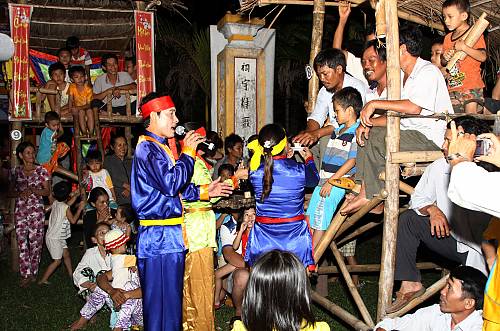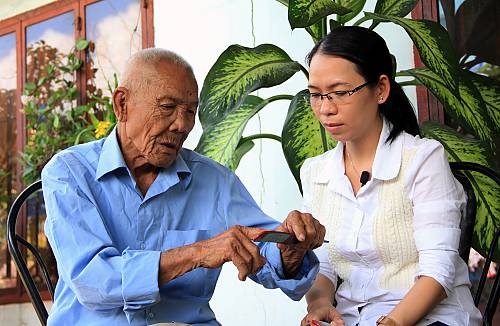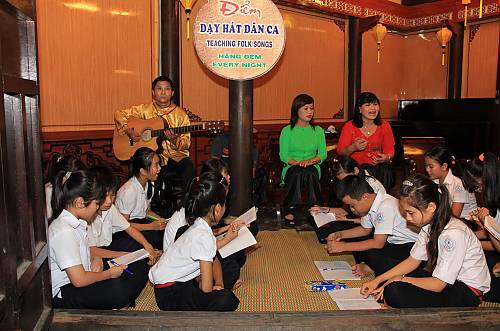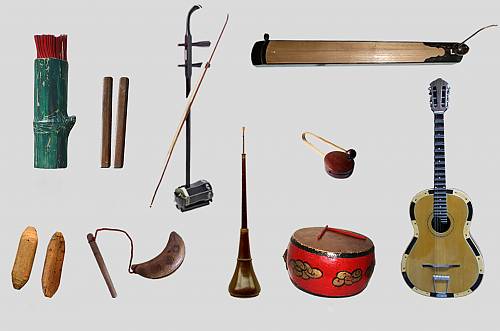The art of Bài Chòi in Central Viet Nam
Inscribed in 2017 (12.COM) on the Representative List of the Intangible Cultural Heritage of Humanity

The art of Bài Chòi in Central Viet Nam is a diverse art combining music, poetry, acting, painting and literature. It takes two main forms: ‘Bài Chòi games’ and ‘Bài Chòi performance’. Bài Chòi games involve a card game played in bamboo huts during the Lunar New Year. In Bai Choi performances, male and female Hieu artists perform on a rattan mat, either moving from place to place or in private occasions for families. The bearers and practitioners of the art of Bài Chòi are Hieu artists, solo Bài Chòi performers, card-making folk artists and hut-making folk artists. The art of Bài Chòi is an important form of culture and recreation within village communities. Performers and their families play a major role in safeguarding the practice by teaching song repertoires, singing skills, performance techniques and card-making methods to younger generations. Together with communities, these performers have set up nearly 90 Bài Chòi teams, groups and clubs to practise and transmit the art form, which attracts wide community participation. Most performers of the art learn their skills within the family and the skills are mainly transmitted orally, but artists specializing in Bài Chòi also transmit knowledge and skills in clubs, schools and associations.









